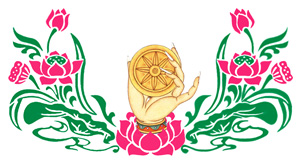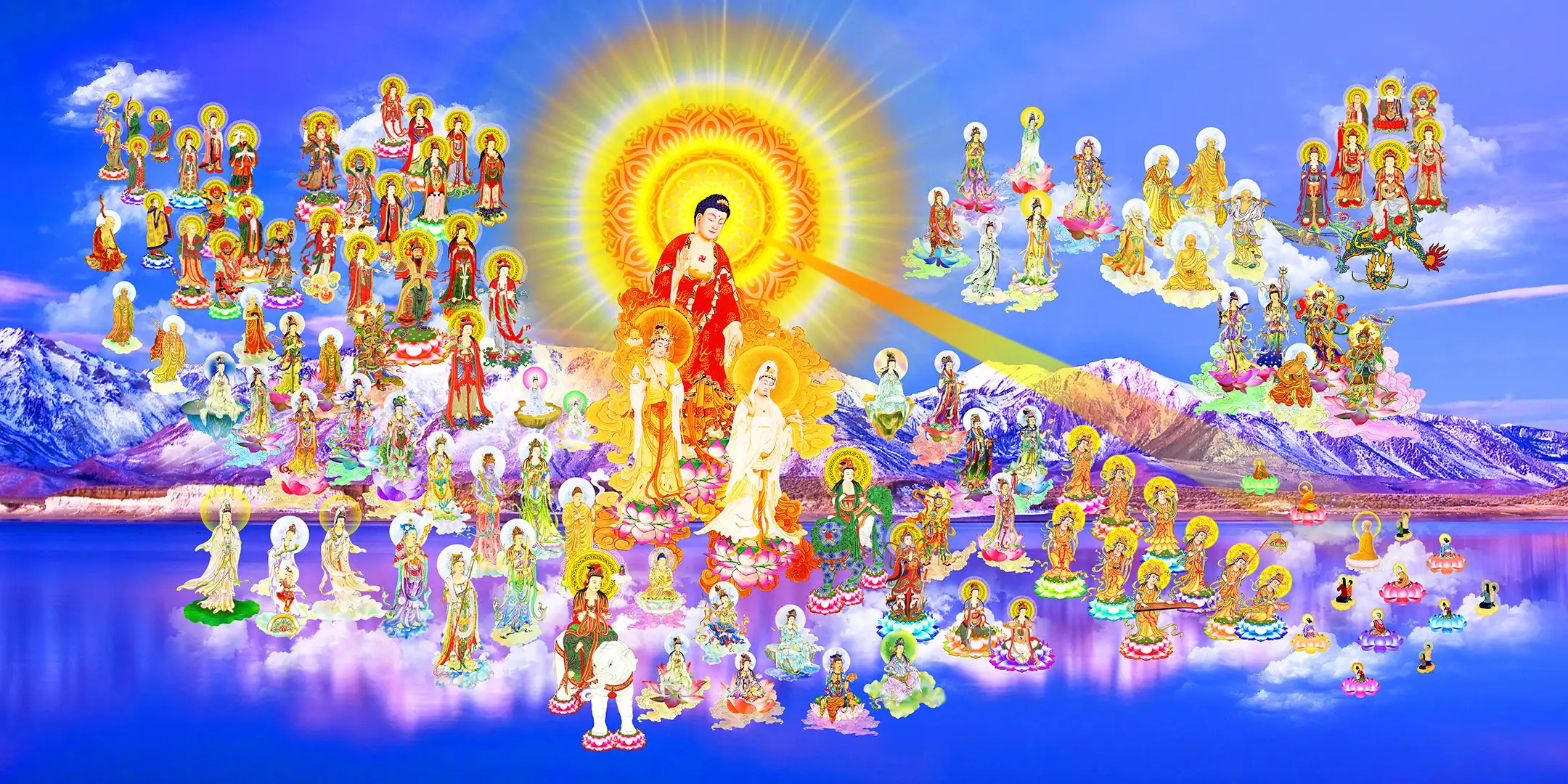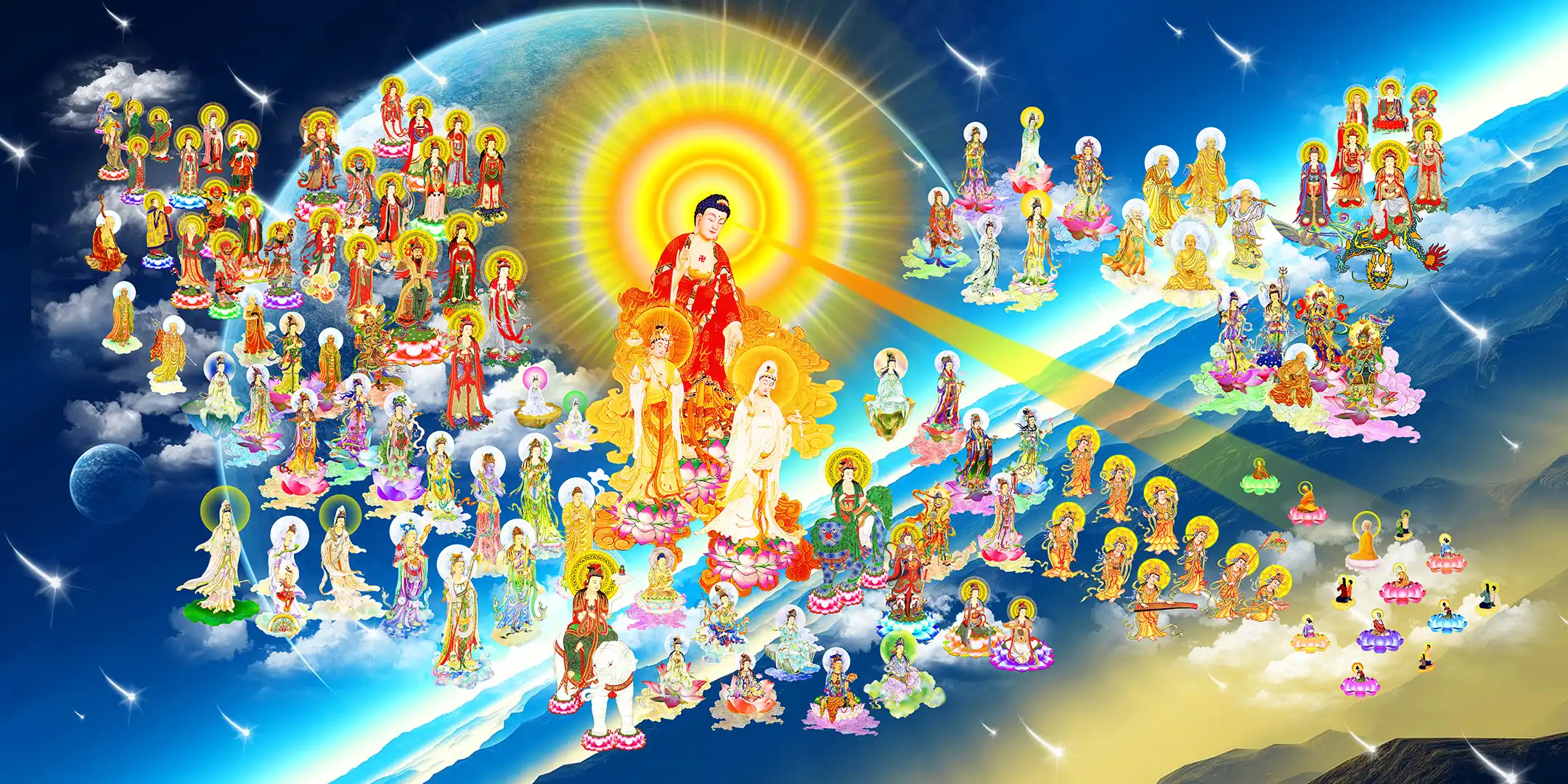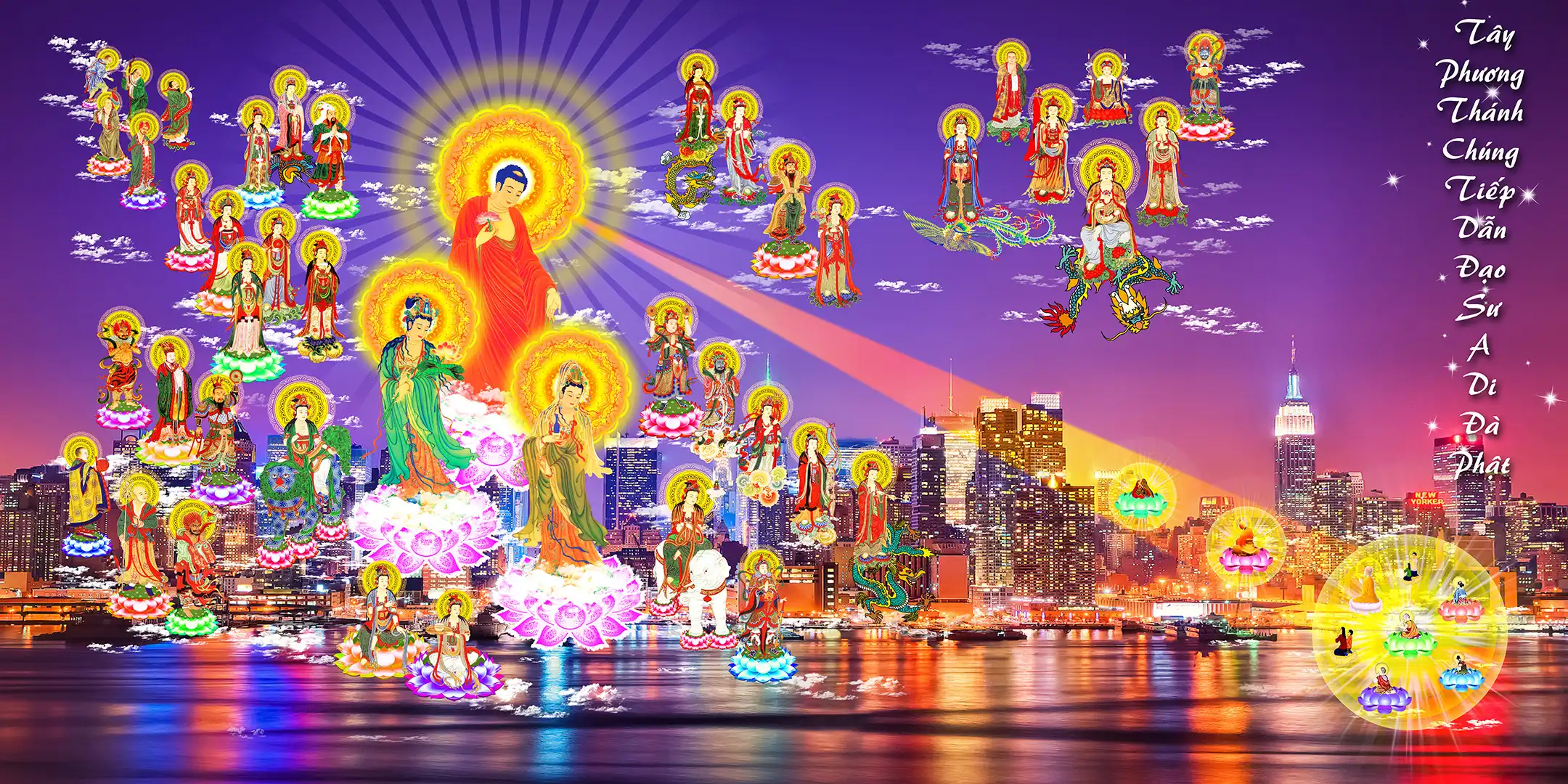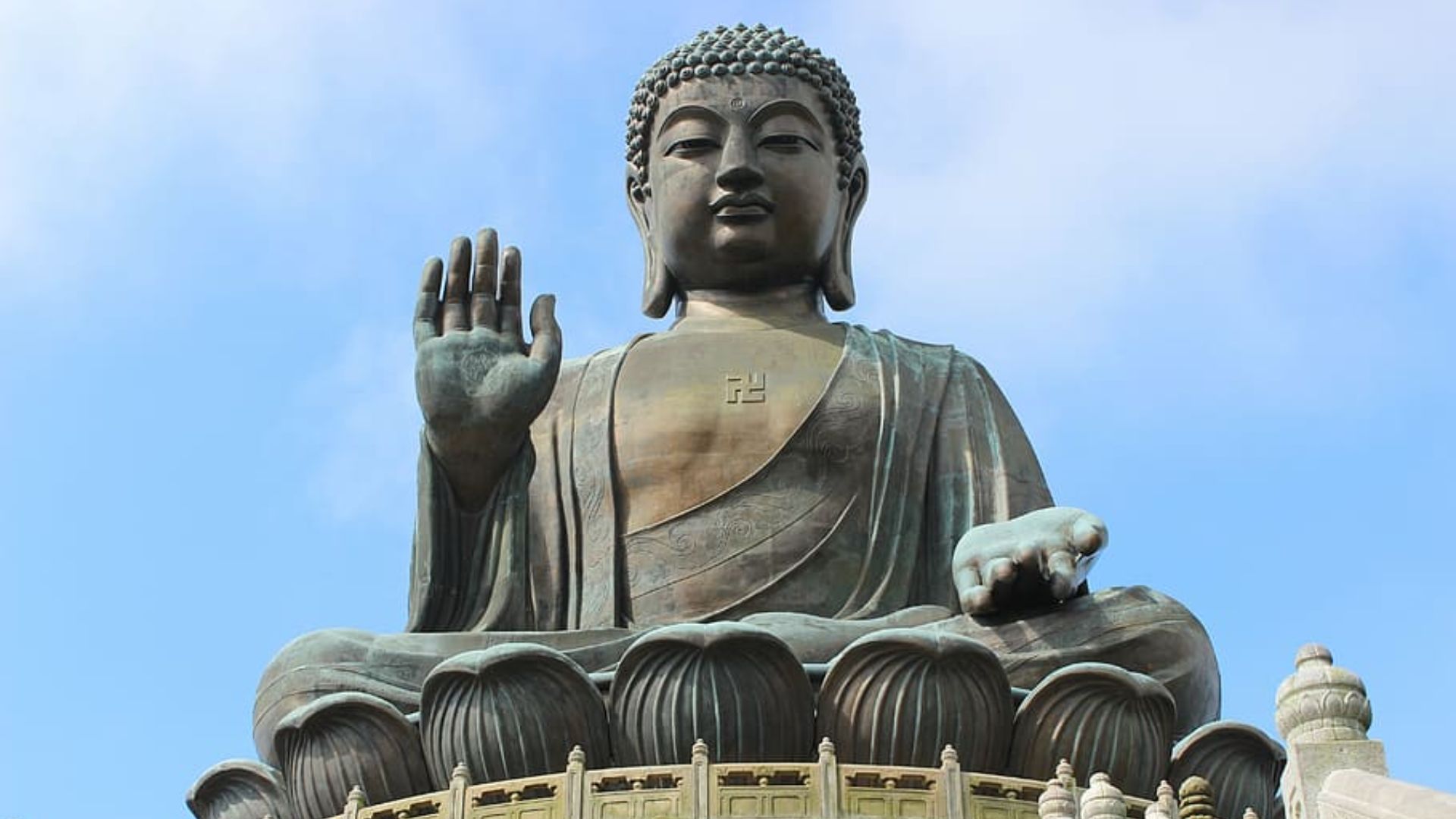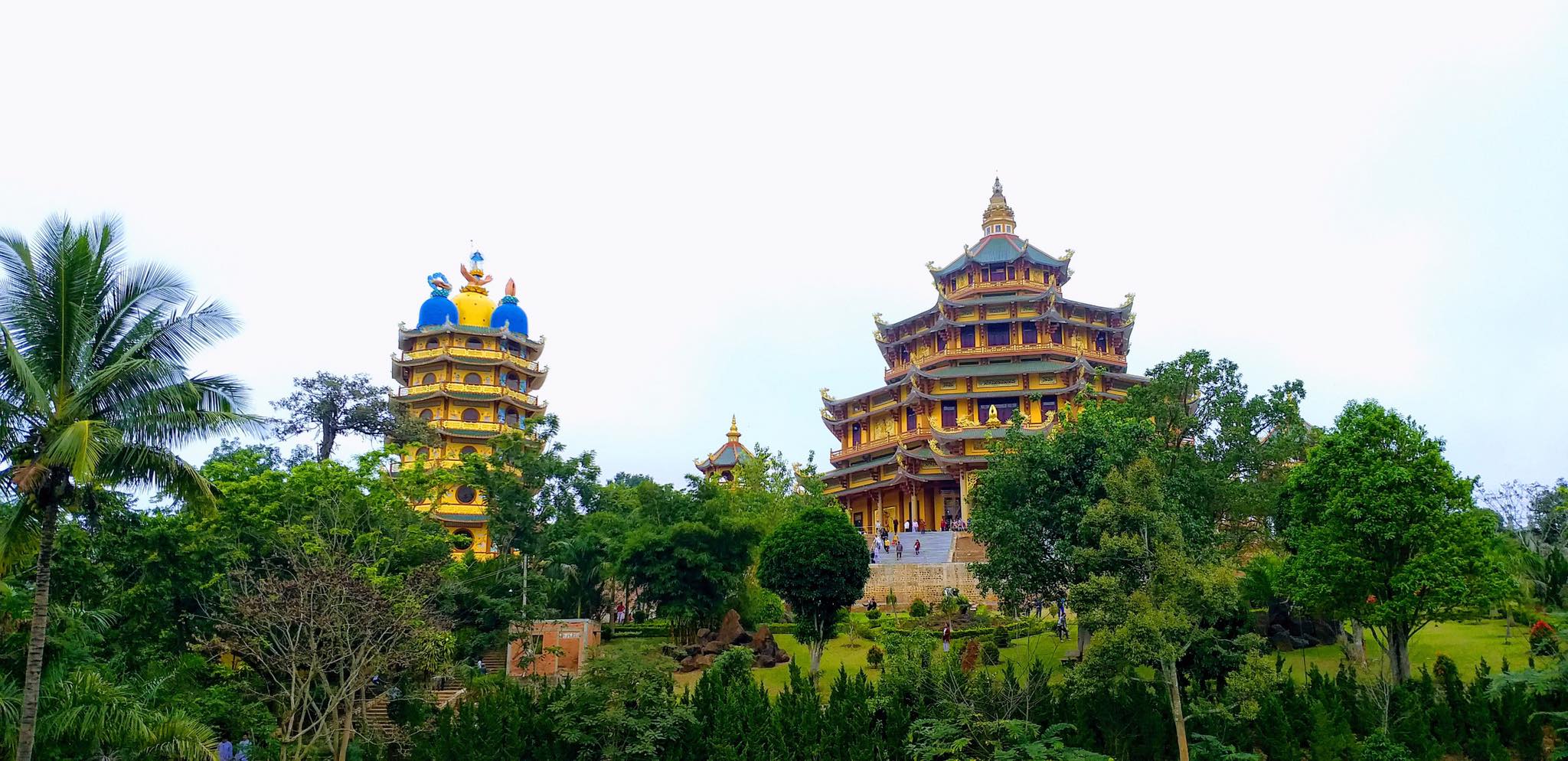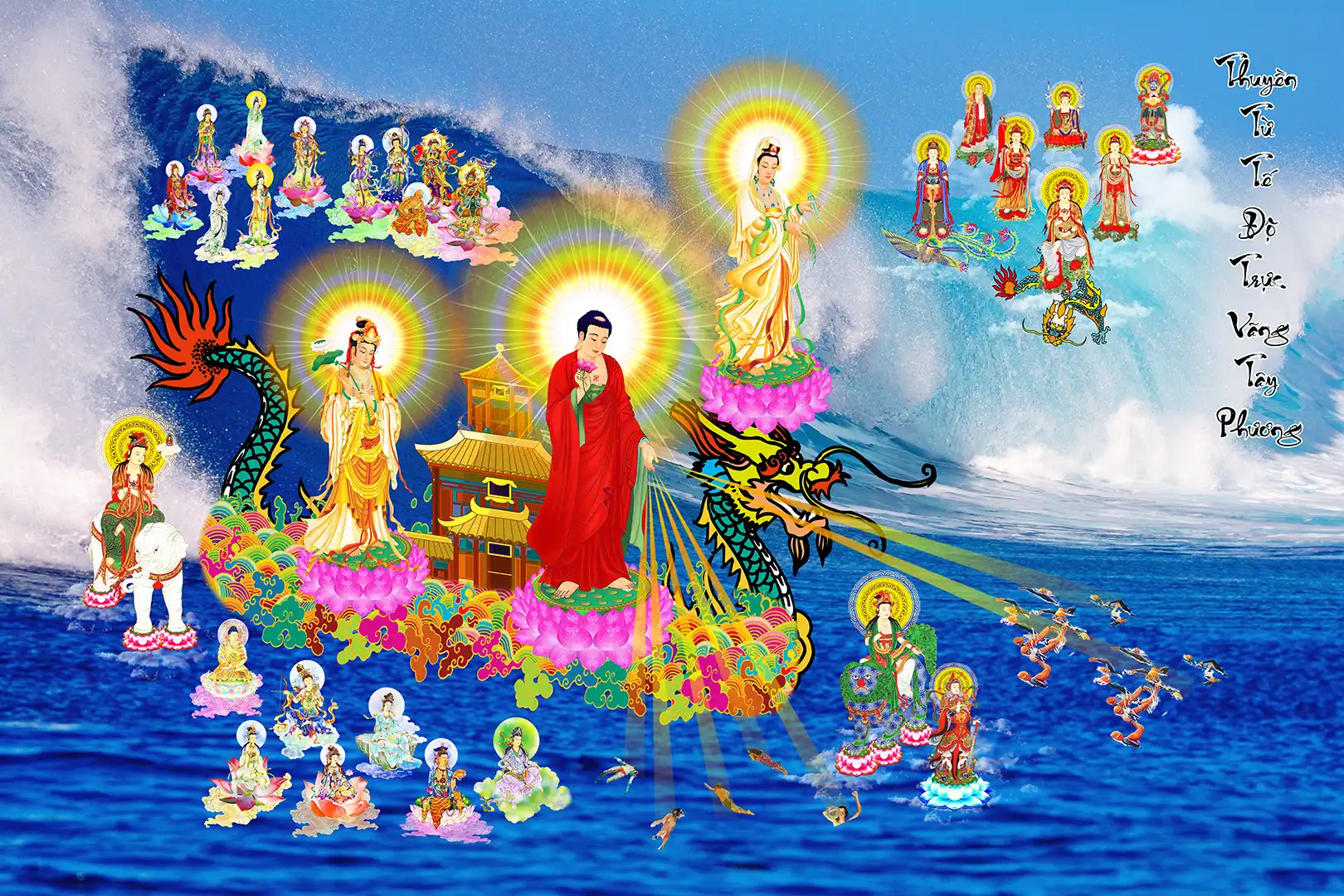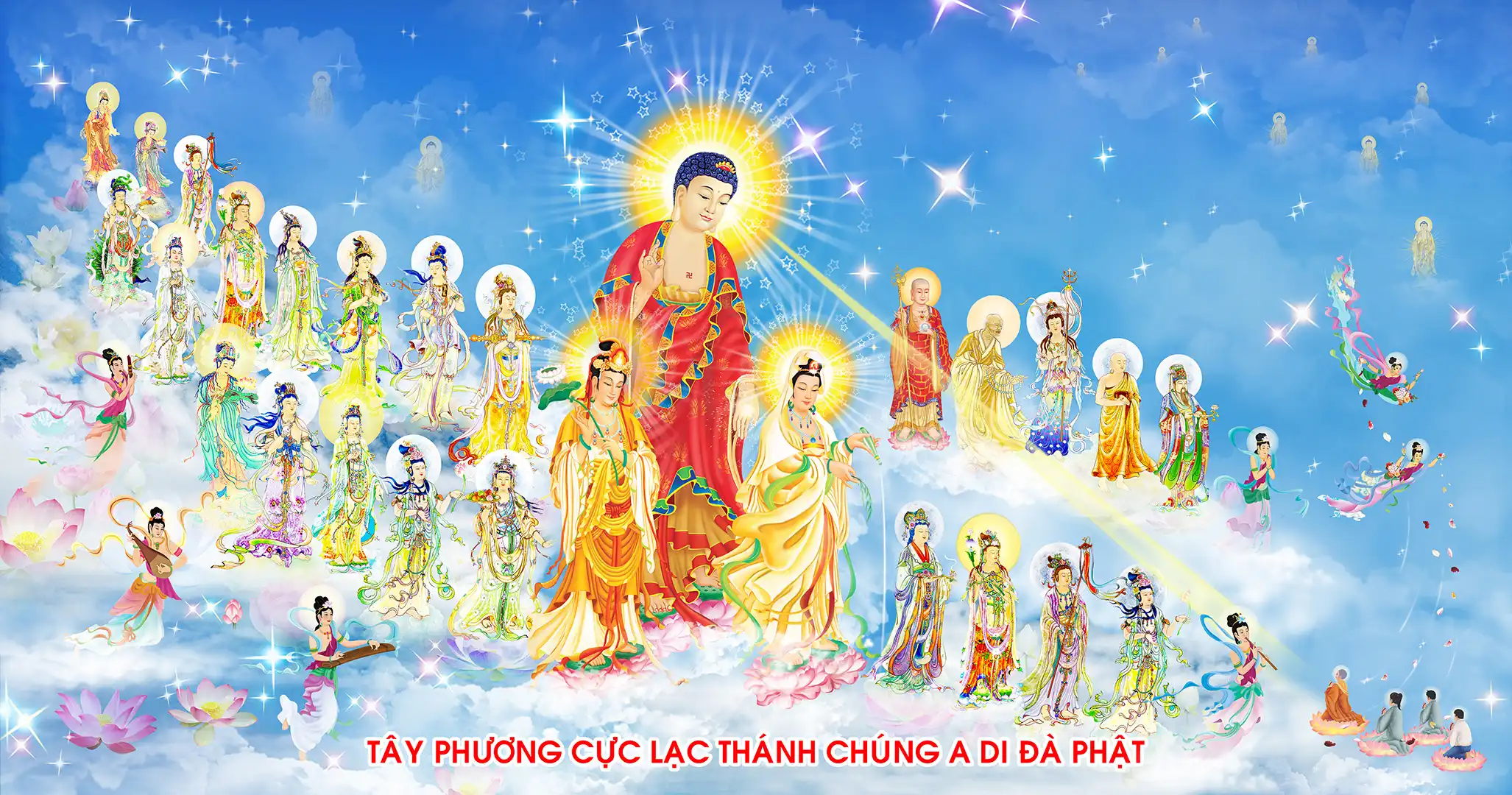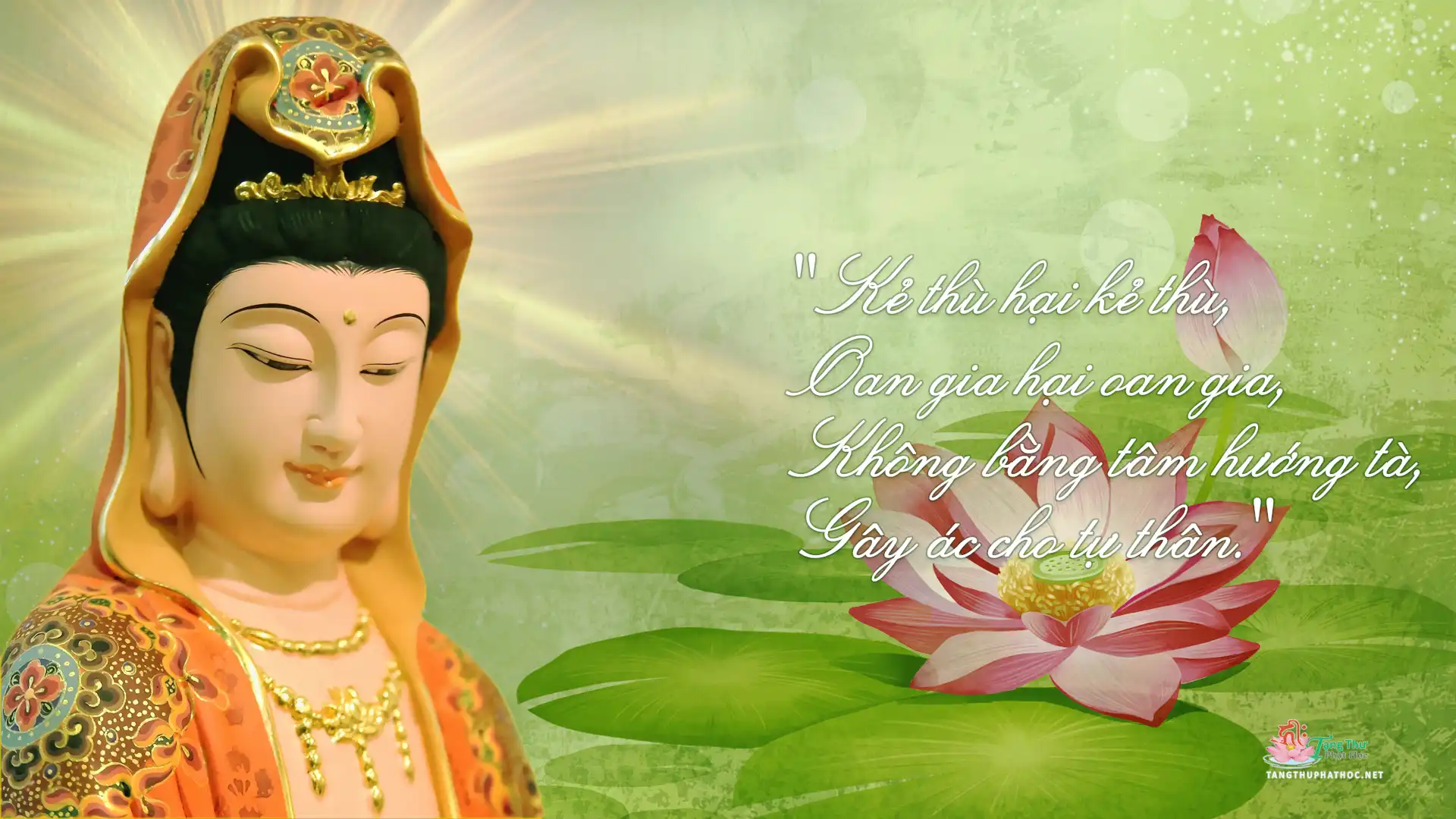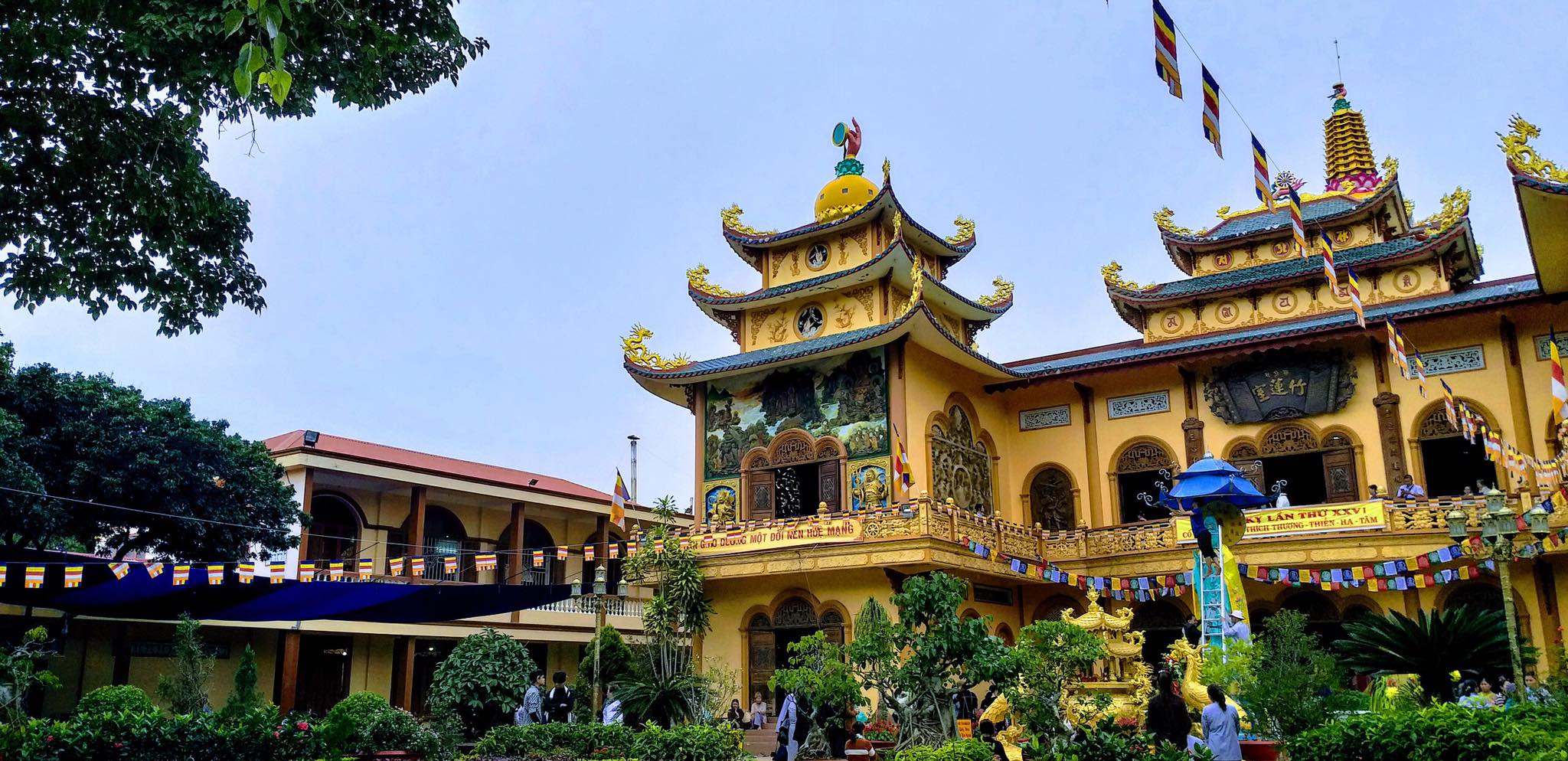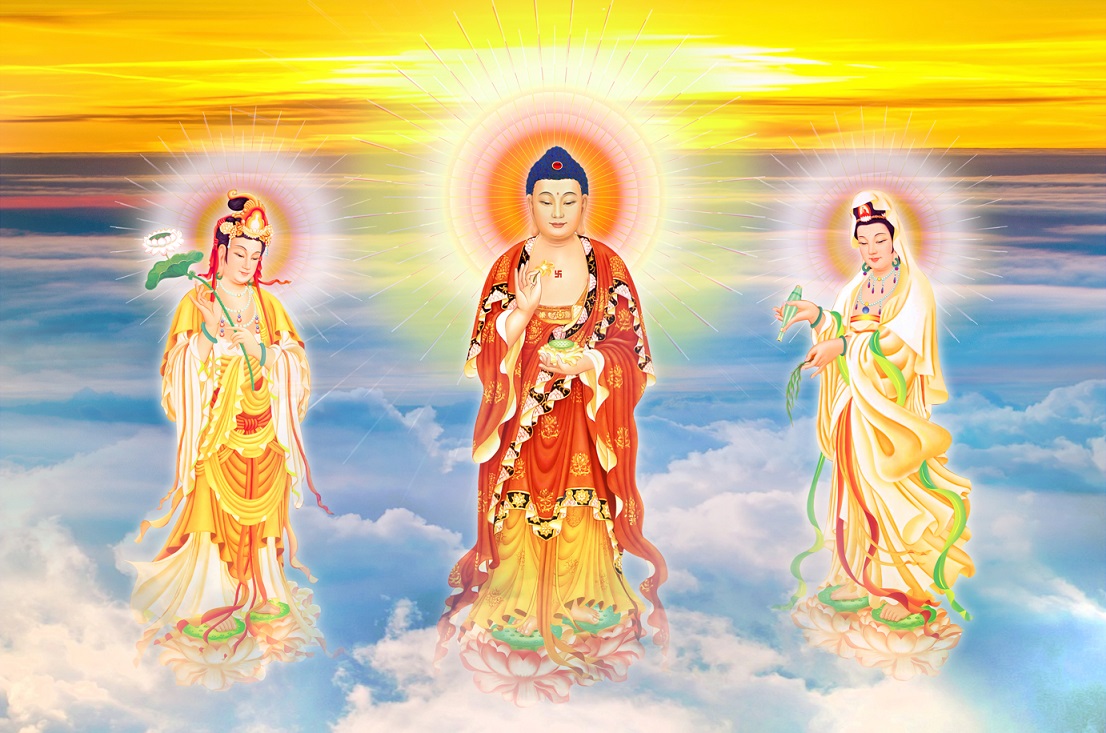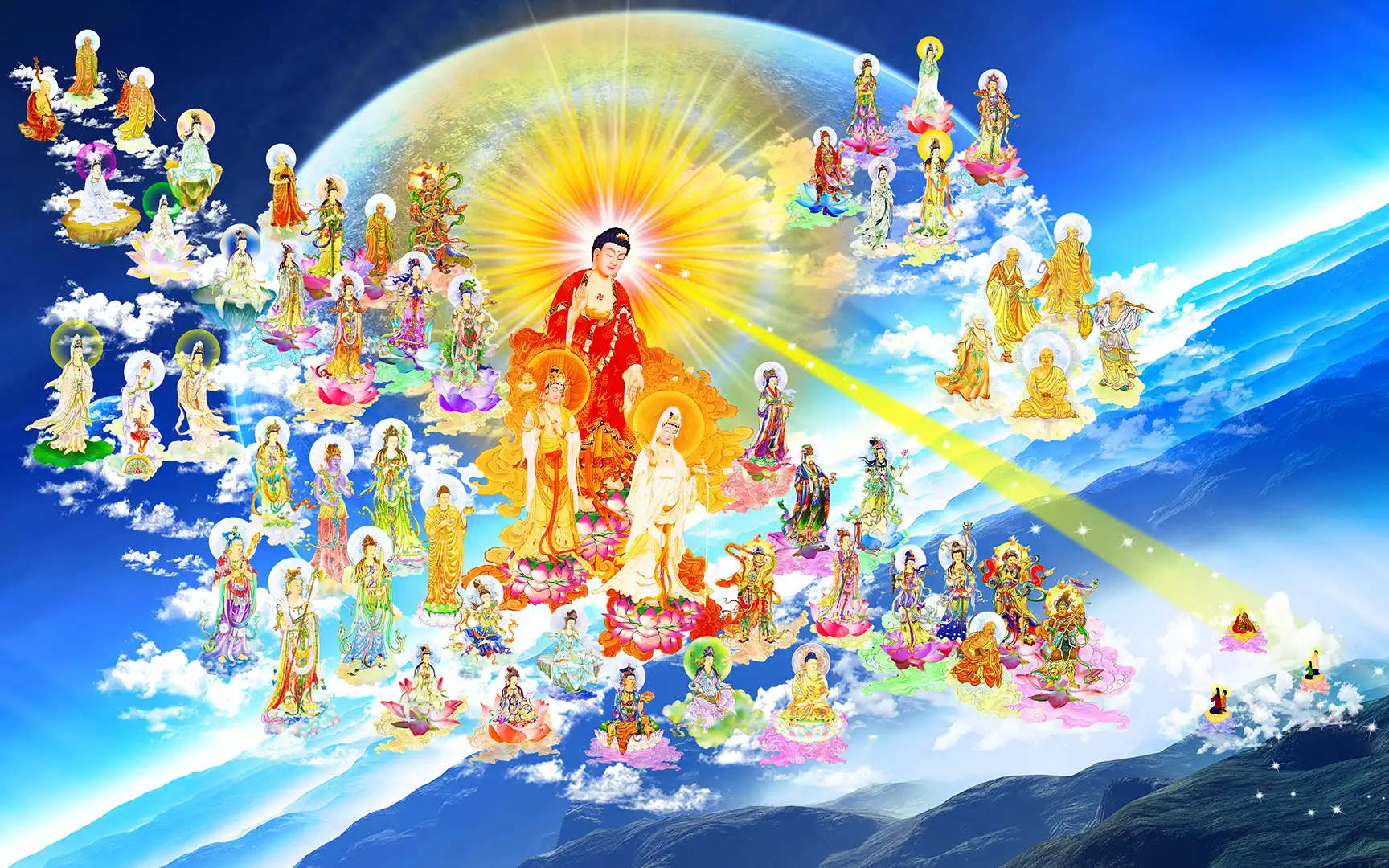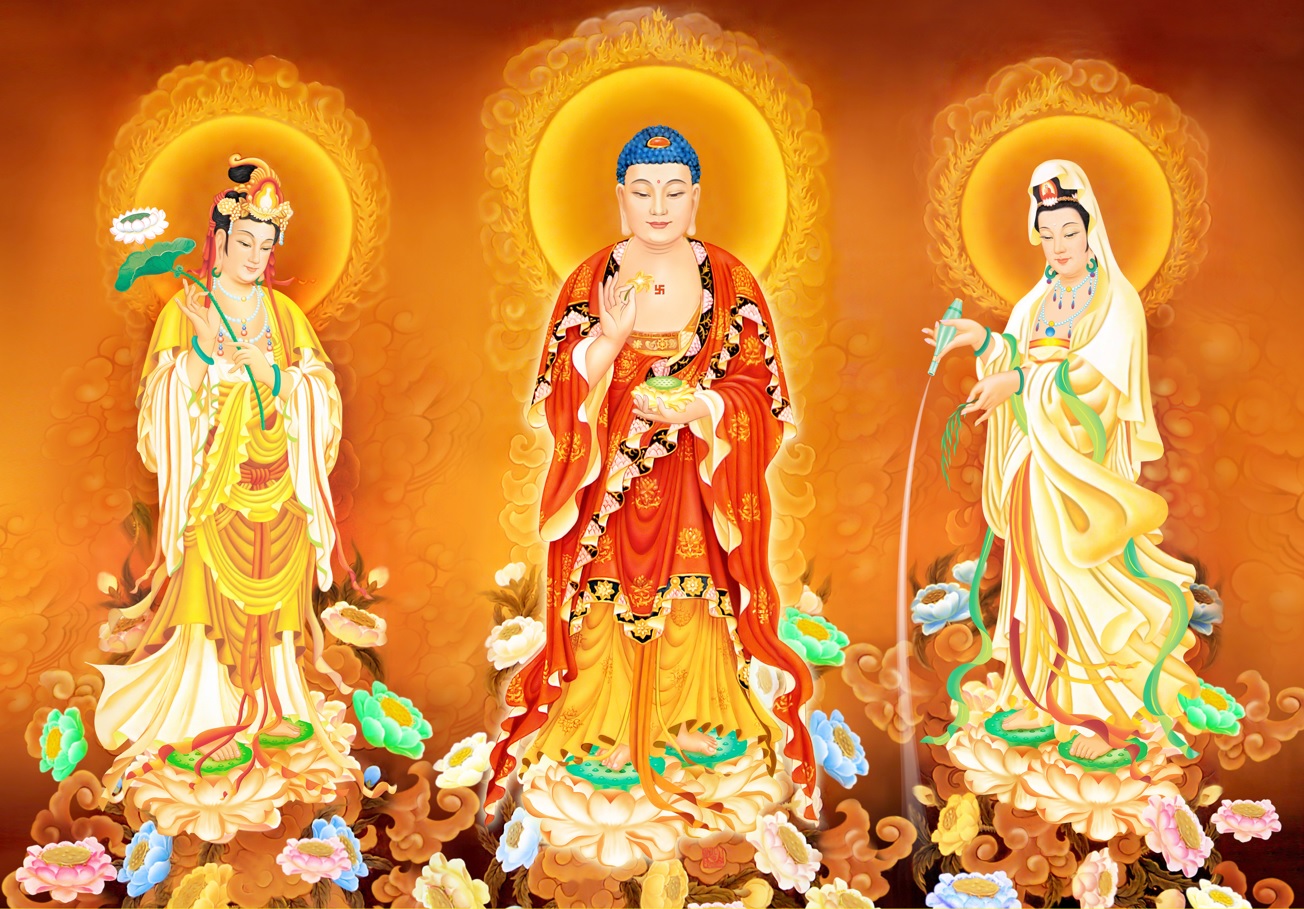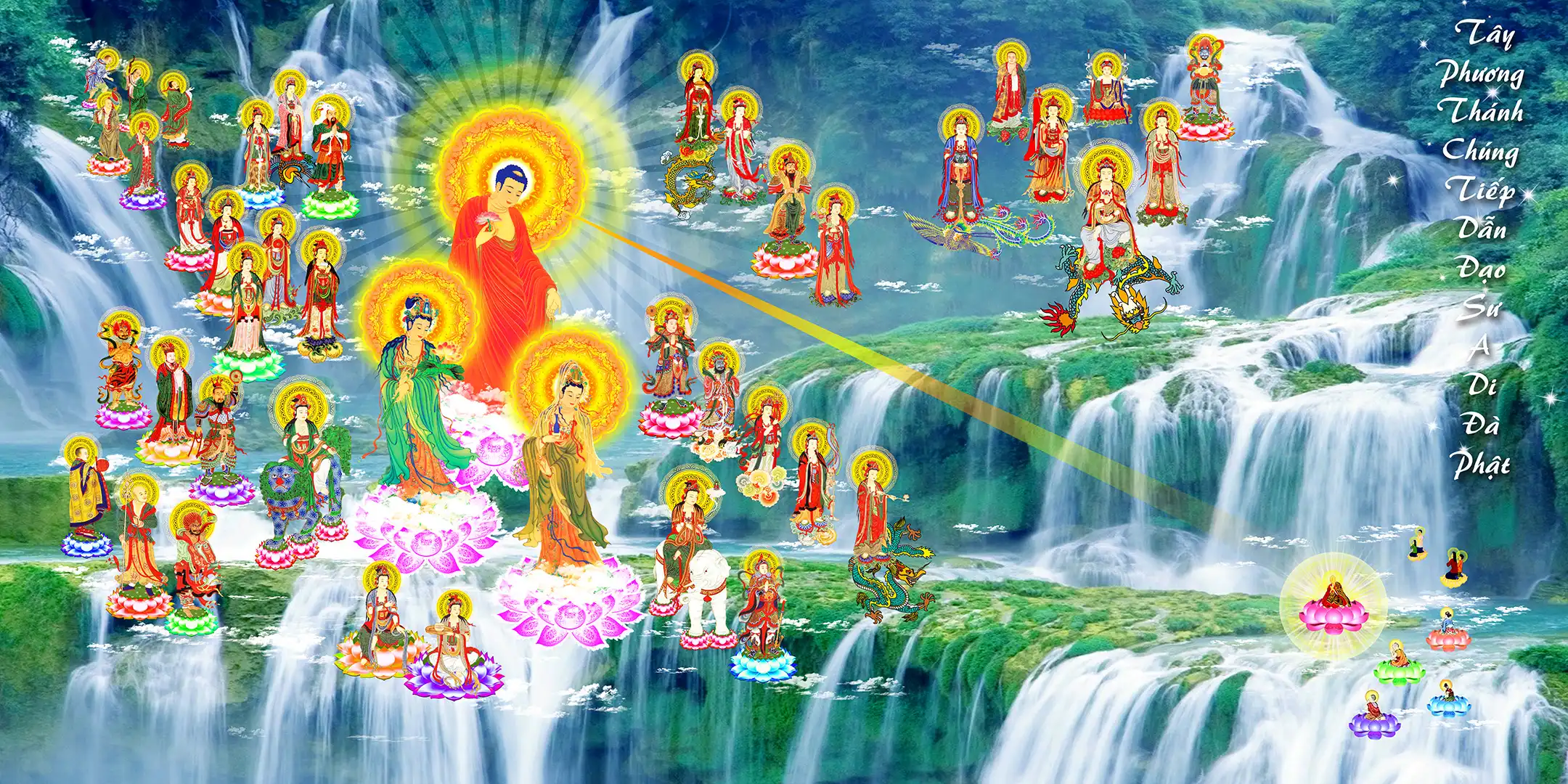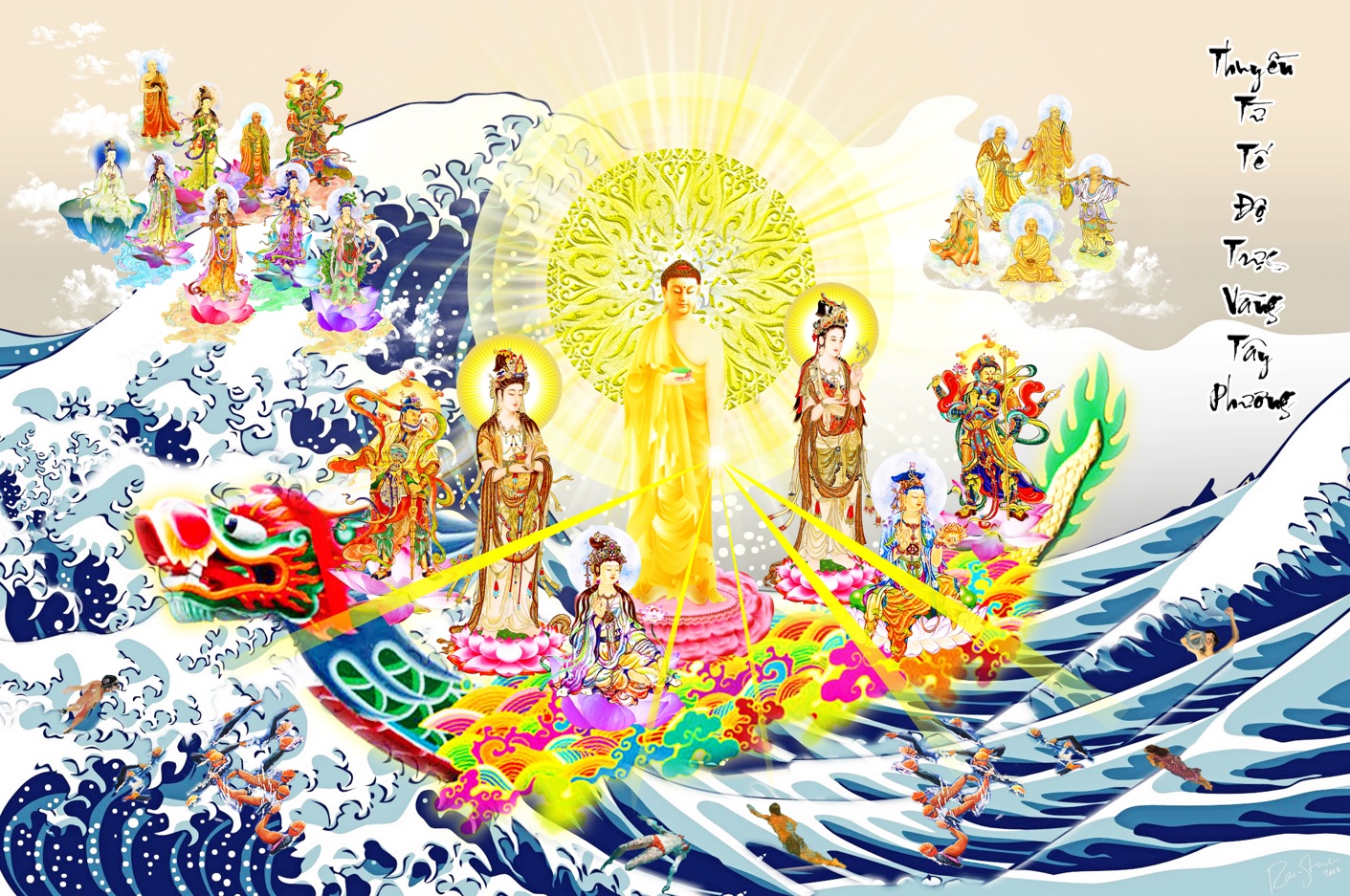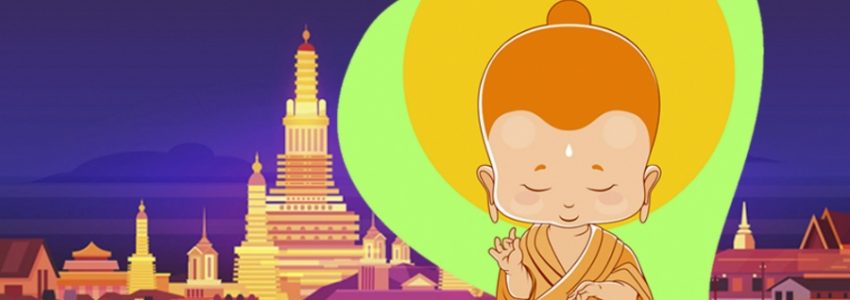THE SORROWLESS FLOWERS
Thiện Phúc
VOLUME I
1. The World During the Pre-Buddhism
2. The Formation of Buddhism
3. For the Sake of a Great Cause
4. The Buddha
5. Buddha’s Birth Day
6. The Historical Buddha Sakyamuni
7. Four Sights which Changed the Buddha’s Life
8. Six Years of Ascetic Praticing of the Buddha
9. In the Heavens Above and Earth Beneath I Alone Am the Honoured One
10. The Image of the Buddha in the Dharmapada Sutra
1. The World During the Pre-Buddhism
About 3,000 years B.C., along the River Indus, there grew up a city-based civilization, known as the “Indus Valley Culture”. The two greatest cities were at Mohenjo Daro and Harrappa, for which reason this has been termed the “Harrappan Culture”. According to Andrew Skilton in the “Concise History of Buddhism”, this society appears to have been highly organized and very conservative, showing little change over many centuries. Attempts to reconsctruct customs and beliefs of this society are largely speculative though most suggestive items that have been recovered, such as seals used in extensive trading, especially in the coastal areas. These show a form of writing, as yet undeciphered. One famous seal shows a masked human figure in a yogic posture, thought by some to be performing a primitive form of yoga or meditation. This civilization gradually declined in around 1,200 years B.C., possibly as a result of enviromental changes, most probably the change of direction in the flow of the River Indus.
However, this is not likely to have been linked with the coincidental appearance of invading tribes from the north-west. Probably, these new comers found their way to Northern India when the culture there was in its dead time. Many scholars believed that this was not a military invasion, but a cultural osmosis. No matter what had happened, military invasion, or cultural osmosis, or the dying-out of the “Indus Valley Culture”, this continent had become new homeland for large waves of migrating nomadic tribes, pushed out from their old homeland which originally stretched from Central Europe to Central Asia. After climbing various passes through the Himalayas to the North-West of present day India’s frontier with Nepal, these Aryan tribes began a complete sweep eastward across the entire subcontinent in the next several centuries. These Aryan tribes brought with them their own beliefs of polytheism. They also brought with them their own social caste system, which divided society into three classes: priests, warriors, and farmers. The first of these were professional reciters of hymns and performers of ritual, the predecessors of the later “brahmana” class. The last two classes were similar to the “ksatriya” and “vaisya” classes. All this known because of the survival of the texts produced by these people’s descendants. These are basic scriptures of Brahmanism, not recognizing by Buddhists.
Before Buddhism, Hinduism, the traditional social religious structure of the Indian people and its origin is still mystic. It has neither a founder nor a fixed canon. It incorporated for centuries all aspects of truth. Hindus believe in the law of karma. Hinduism or Brahmanism, the general name given to the social-cultural-religious system of the Indo-Aryan, who migrated into India just before the dawn of history. The manitenance of the four castes (see Four castes in India) which assures the supremacy of the priest caste, the brahmana. Appeasement of the gods by means of rituals derived from the Sacred Vedas. Complete faith and fidelity to the theory of karma and reincarnation, with rebirth in heaven seen as the final goal of earthly life. There is a universla law, which operates throughout all life. Whatever is sown must be reaped sometime and somewhere. This is the law: every action, every intention to act, every attitude bears its own fruit. A man becomes good by good deeds and bad by bad deeds. It is to say each person is fully responsible for his own condition, and cannot put the blame on anyone else. You are what you are because of what you have done in the past. To a Hindu the past, of course, would include all previous lives or existences. In Hindu tradition, the main duties assigned to women were childbearing and housework. Thus it considers a single life as a wasted life and unmarried women were subject to scoffs. The stories in the Vedas reveal a great deal about the Indian people who were searching for answers about life around them, as well as about the remote universe. The oldest sacred books of Hinduism called the Vedas. They are ancient poems and hymns which were composed more than 3,000 years ago. The Brahmanic rules which the priests use for rituals of worship dated from between 1,200 and 1,000 B.C. The Great Epics are philosophical and religious poems about legendary heroes and gods. They were ancient stories that had been told for generations before they were written at about the first century B.C. A short section of one of the Epics, the Bhagavad Gita Gait, has become the favorite religious text in India.
According to Hindu teachings, every person has a specific place in life and specific responsibilities. Each person is born where he is, and with particular abilities that he has, because of past actions and attitudes. There are four main castes in Hinduism. Within the four castes, there are dozens of sub-divisions. Through the years, more than a thousand levels of castes have appeared in Indian social life; but all belong to one of the four main groups. In ordinary social life, caste lines have frequently reflected real injustices and strong prejudices. Even thoughtful Hindus today realize that abuses have crept into the system. Many efforts have been made in the direction of straightening out some of the gross injustices. Gandhi was one who gave freely of his energies in restoring the “untouchables” to caste status: First, the intellectual-priest group. Second, the nobility, including the warriors. Third, the administrative group, including merchants and landowners. Fourth, the great masses of people who do the common work of a society. The class of so-called “Untouchables” or “Out-castes” (recently abolished by Indian law) was composed of people who had originally belonged to different sub-groups of the fourth caste, the masses. Through various social and economic conditions, they lost caste or lost their place in society. The most important goal for each person to achieve is release from the influence of past unhappiness. Each person has the fundamental aim all through life of escaping from maya through union with Brahman. The life of pleasure, fulfilment of all normal human desires, including the very important desires rooted in sex. Hindus do not reject the sensory experiences of life, development of creative relationships with other people, aesthetic appreciation, and sexual expression. The Hindus value these experiences when used correctly and not regarded as the only goal of life. Participation in economic activity or public welfare, which includes working in some worthwhile job or profession. Each person has an obligation to himself and to society to do some useful work. For this he receives the wherewithal for his daily needs. Living the right kind of moral or ethical life. One has a duty to him and to others to do what is expected of him morally and ethically. The duty has been rather specifically defined in India, for each caste has a code of actions and attitudes, which are expected of its members. And to this code a person is pledged through all his endeavors if he wishes to attain the good life.
The Upanishads, dating from about 800 B.C., are the answers that the renowned hermit-teachers of that period gave to questions about life and the universe. Shortly before the time of the Buddha, the earliest prose Upanishads were compiled, which dealt with a secret teaching, to be passed from master to disciples only. The Uanishads were regarded as the final stage in the evolution of the Veda, and therefore known as the Vedanta, the “Culmination of the Veda”. The ritual elements so prevalent in the earlier texts are less important here, and in their place we find a secret teaching on rebirth. According to the Upanishads, on the one hand, people looked for that which was the basis of the external phenomenal world, the underlying essence of all external objects and things, which were termed “Brahman”; on the other hand, they looked for the ultimately existent thing within the individual, that which supports life and consciousness in each of us, to be termed “Atman”. The secret teaching in the Upanishads taught that “Atman” and “Brahman” were one and the same. Caste lines have frequently reflected real injustices and strong prejudices in ordinary social life. Even thoughtful Hindus today realize that abuses have crept into the system. Many efforts have been made in the direction of straightening out some of the gross injustices. Even people belonged to the noble class also tried to restore the “untouchables” to caste higher statuses. We all know that the growth of any civilization in the world has been accompanied by recurrent waves of disillusion with power and material wealth. This very reason mobilized the resources of the spirit against the existing power system. In India the reaction forces arose in the Northwest regions. From the beginning, Buddhism developed around Benares and Patna, where the Iron Age had thrown up ambitious warrior kings, who had established large kingdoms with big cities. In opposition to superstitions in divine power the Buddha always stressed that He was only a guide, not an authority, and that all propositions must be tested, including His own.
While Buddhism sprouted in India, in China one of the great religions also started: Confucianism. The system of morality growing out of the teachings of the Chinese philosopher Confucius, which stressed on filiality, respect for the elderly, loyality, propriety, faith, justice, decency and shame. Confucius (557-479) was born in the state of Lu. He lived in the time when the moral and cultural tradition of Chou were in rapid decline. In attempting to uphold the Chou culture, he taught poetry, history, ceremonies and music to about 3,000 diciples. He was the first Chinese Great Educator that Chinese people still give him the title “Master of Ten Thousand Years.” However, Confucianism and Buddhism are totally different. Confucianism emphasizes on the ideas of family and society. Confucianism emphasizes on teaching children to grow up, to get married, to bear children and grandchildren, to continue the family line, to be a productive member in society. In contrast, Buddhism is founded on the essence of ‘abandoning worldly ways,’ to leave home, to detach from family, parents, wife, husband, children, relatives, friends, etc. Therefore, Confucian scholars considered Buddhism as wicked and false teachings. That was why when Buddhism was first introduced into China, it was strongly opposed by Confucian scholars. However, the popularity of the Buddha and his disciples largely depended upon his method of approach to the masses. The Buddha had asked his disciples to preach his doctrine in the people’s own language. The people were naturally impressed. Taoism is one of the big religions in China. This religion was founded by Lao-Tzu, at the same time with Buddhism in India. Its doctrines are based on Tao or way of nature. Taoist practitioners traditionally strive for immortality, which, in Buddhism, is a classic example of deluded attachment to the body.
2. The Formation of Buddhism
About 7 centuries B.C., India was divided into sixteen zones, eight of which were kingdoms and the remaining republics. Indian society before and at the time of the Buddha was a society that had full of conflicts, especially struggles for power and material wealth. During this period many people were not able to find satisfaction in Hinduism to their daily life’s disturbing problems. Because of this disastifaction, some religious reforms shortly arose in an attempt to rid Hinduism of its superficiality. One of these reforms was to be the beginning of Buddhism. About 600 B.C., the Buddha not only expounded the four Noble Truths as the core of his teaching, which he had recognized in the moment of his enlightenment, He had also shown people how to live wisely and happily, and therefore, his teachings soon spread from India throughout Asia, and beyond. Spiritually speaking, He mobilized people to stand up to fight against the existing power system. In fact, Buddhism is not a new religion in India, it is only a symbol of separation with Hinduism. As we can see while the religion of the Veda allowed animal sacrifice to propitiate the gods, Buddhism set its face against sacrifices. Moreover, Buddhism waged strong campaigns against this practice. Because the sacrificial ritual required the services of Brahmins, who had specialized in religious ceremonies, while ordinary people, from one generation to another, could only do labor works. Thus, Buddhism denounced the Caste system at that time in India. And the Buddha denounced all claims to superiority on the ground of birth as the Brahmins claimed. Buddhism denounced all social distinctions between man and man, and declared that it was ‘karma’, the action of man, that determined the eminence or lowness of an individual. The Buddha confirmed with his disciples: “The insistence on the equality of social status based on one’s actions and not on the lineage of birth of that person.” Another revolutionary idea we can find in Buddhism was the fact that it widely opened the doors of organized religious life to women and men alike. In addition to distinguished nuns and lay Buddhist-women, such as Khema, Patacara, and Dhammadinna, Sujata, Visakha, and Samavati, even courtesans like Amrapali were not denied opportunities to embrace the religious life. For these reasons, from the beginning in Northeast India almost 26 centuries ago, Buddhism penetrated not only in the heart of Asian people, but since the noneteenth century it also became part of the thinking and practice of a lot of people in Europe and America as well.
About the Seventh Century B.C., many people questioned the value of their own religion: Hinduism. According to Hinduism’s theories, they had to be reborn to the same class forever. If they belonged to the class of Sudra, they would be reborn into that class life after life. At first, Prince Siddhartha always concerned with burning questions as: “Why was there unhappiness?”, or “How could a man be happy?”, etc. He diligently performed ascetic practices, but after six years of persevering search and strenuous self-denial, He still had not found the answers for these problems. After spending six years in seeking a solution of emancipation through ascetic practices without any success, Prince Siddhartha determined to find the answer in thought and meditation. After 49 days and nights of meditation under the Bodhi Tree, He had become the “Awakened One”. The path that the Buddha had found was the “Middle Path”, which was in between extremes. The extremes to be avoided were the life of sensual indulgence on the one hand and the life of drastic asceticism on the other. Both led to out-of-balance living. Neither led to the true goal of release from sufferings and afflictions. The Buddha declared: “To find the Middle Path to harmonious living, each person must search thoughtfully, not wasting any time in wordy arguments. Each person must explore and experiment for himself without any exception.” During almost twenty-six centuries, both Mahayana and Hinayana Buddhism have proved adaptable to changing conditions and to different peoples in the world with the belief that what the Buddha discovered can help almost everyone. For the question “Why am I unhappy?’ the Buddha suggests: because you fill yourself with wanting, until the wanting is a thirst that cannot be satisfied even by the things you want. “How can I be happy?” By ceasing to want. Just as a fire dies down when no fuel is added, so your unhappiness will end when the fuel of excessive is taken away. When you conquer selfish, unwise habits and hopes, your real happiness will emerge.
3. For the Sake of a Great Cause
The Buddha arose in this world for the sake of a great cause, or because of a great matter. The Buddha appeared, for the changing beings from illusion into enlightenment (according to the Lotus Sutra), or the Buddha-nature (according to the Nirvana Sutra), or the joy of Paradise (according to the Infinite Life Sutra). According to the Anguttara Nikaya, the Buddha is a unique being, an extraordinary man arises in this world for the benefit of sentient beings, for the happiness of sentient beings, out of compassion for the world, and for the good of gods and men. The Buddha founded Buddhism. Some says that Buddhism is a philosophy of life, not a religion. In fact, Buddhism is not strictly a religion in the sense in which that word is commonly understood, for it is not a system of faith and worship to a supernatural god. Buddhism is neither a philosophy. In the contrary, the Buddha’s message is really for human beings in daily life: “Keeping away from all evil deeds, cultivation of a moral life by doing good deeds and purification of mind from worldly impurities.” This message originated from the Buddha’s realization of the Truth. As a prince living in the lap of luxury, the Buddha started to ponder very deeply on why living beings suffer in this world. He asked himself: “What is the cause of this suffering?” One day while sitting under a tree as a young boy, he saw a snake suddenly appear and catch an eel. As the snake and the eel were struggling, an eagle swooped down from the sky and took away the snake with the eel still in its mouth. That incident was the turning point for the young prince to start thinking about renouncing the worldly life. He realized that living beings on the earth survive by preying on each other. While one being tries to grab and the other tries to escape and this eternal battle will continue forever. This never-ending process of hunting, and self-preservation is the basis of our unhappiness. It is the source of all suffering. The Prince decided that he would discover the means to end this suffering. He left His father’s palace at the age of 29 and six years later he gained enlightenment. According to the Buddha, the Law of Cause and Effect controls all beings. Karma simply means action. If a person commits a bad action (karma) it will be impossible for that person to escape from its bad effect. The Buddha is only a Master, who can tell beings what to do and what to avoid but he cannot do the work for anyone. In the Dhammapada Sutra, the Buddha clearly stated: “You have to do the work of salvation yourself. No one can do anything for another for salvation except to show the way.”
4. The Buddha
The word Buddha is not a proper name, but a title meaning “Enlightened One” or “Awakened One.” Prince Siddhartha was not born to be called Buddha. He was not born enlightened; however, efforts after efforts, he became enlightened. Any beings who sincerely try can also be freed from all clingings and become enlightened as the Buddha. All Buddhists should be aware that the Buddha was not a god or any kind of supernatural being. Like us, he was born a man. The differnce between the Buddha and an ordinary man is simply that the former has awakened to his Buddha nature while the latter is still deluded about it. However, whether we are awakened or deluded, the Buddha nature is equally present in all beings. “Buddha” is an epithet of those who successfully break the hold of ignorance, liberate themselves from cyclic existence, and teach others the path to liberation. The word “Buddha” derived from the Sanskrit root budh, “to awaken,” it refers to someone who attains Nirvana through meditative practice and the cultivation of such qualities as wisdom, patience, and generosity. Such a person will never again be reborn within cyclic existence, as all the cognitive ties that bind ordinary beings to continued rebirth have been severed. Through their meditative practice, buddhas have eliminated all craving, and defilements. The Buddha of the present era is referred to as “Sakyamuni” (Sage of the Sakya). He was born Siddhartha Gautama, a member of the Sakya clan. The Buddha is One awakened or enlightened to the true nature of existence. The word Buddha is the name for one who has been enlightened, who brings enlightenment to others, whose enlightened practice is complete and ultimate. The term Buddha derived from the Sanskrit verb root “Budh” meaning to understand, to be aware of, or to awake. It describes a person who has achieved the enlightenment that leads to release from the cycle of birth and death and has thereby attained complete liberation. The Buddha is the Enlightened One. Chinese translation is “to perceive” and “knowledge.” Buddha means a person who has achieved the enlightenment that leads to release from the cycle of birth and death and has thereby attained complete liberation. There are three degrees of enlightenment: enlightenment derived from one’s self, enlighten others, and attain the Buddhahood. The Buddha is the Enlightened One with Great Loving Kindness. He benefitted and perfected of the self (to benefit oneself), or to improve himself for the purpose of improving or benefiting others. Self-benefiting for the benefit of others, unlimited altruism and pity being the theory of Mahayana. “Self profit profit others,” the essential nature and work of a Bodhisattva, to benefit himself and benefit others, or himself press forward in the Buddhist life in order to carry others forward. Hinayana is considered to be self-advancement, self-salvation by works or discipline; Bodhisattva Buddhism as saving oneself in order to save others, or making progress and helping others to progress, Bodhisattvism being essentially altruistic. The second step is Benefiting or perfecting of others (to benefit others). And the third step is to attain of Buddhahood.
The Buddha is the person who has achieve the enlightenment that leads to release from the cycle of birth and death and has thereby attained complete liberation. The word Buddha is not a proper name but a title meaning “Enlightened One” or “Awakened One.” Prince Siddhartha was not born to be called Buddha. He was not born enlightened, nor did he receive the grace of any supernatural being; however, efforts after efforts, he became enlightened. It is obvious to Buddhists who believe in re-incarnation, that the Buddha did not come into the world for the first time. Like everyone else, he had undergone many births and deaths, had experienced the world as an animal, as a man, and as a god. During many rebirths, he would have shared the common fate of all that lives. A spiritual perfection like that of a Buddha cannot be the result of just one life. It must mature slowly throughout many ages and aeons. However, after His Enlightenment, the Buddha confirmed that any beings who sincerely try can also be freed from all clingings and become enlightened as the Buddha. All Buddhists should be aware that the Buddha was not a god or any kind of supernatural being (supreme deity), nor was he a savior or creator who rescues sentient beings by taking upon himself the burden of their sins. Like us, he was born a man. The difference between the Buddha and an ordinary man is simply that the former has awakened to his Buddha nature while the latter is still deluded about it. However, the Buddha nature is equally present in all beings.
According to the Zen sects, Buddhists accept the historic Sakyamuni Buddha neither as a Supreme Deity nor as a savior who rescues men by taking upon himself the burden of their sins. Rather, it verenates him as a fully awakened, fully perfected human being who attained liberation of body and mind through his own human efforts and not by the grace of any supernatural being. According to Buddhism, we are all Buddhas from the very beginning, that means everyone of us is potentially a Buddha; however, to become a Buddha, one must follow the arduous road to enlightenment. Various classifications of the stages of Buddhahood are to be found in the sutras. A Buddha in the highest stage is not only fully enlightened but a Perfect One, one who has become whole, complete in himself, that is, one in whom all spiritual and psychic faculties have come to perfection, to maturity, to a stage of perfect harmony, and whose consciousness encompasses the infinity of the universe. Such a one can no longer be identified with the limitations of his individual personality, his individual character and existence; there is nothing by which he could be measured, there are no words to describe him.
5. Buddha’s Birth Day
In the year 563 B.C. a baby was born into a royal family in northern India. He grew up in wealth and luxury but soon found that worldly comfort and security do not guarantee real happiness. He was deeply moved by the suffering he saw all around, so He resolved to find the key to human happiness. When he was 29 he left his wife and child and his Royal Palace and set off to sit at the feet of the great religious teachers of the day to learn from them. They taught him much but none really knew the cause of human sufferings and afflictions and how it could be overcome. Eventually, after six years study and meditation he had an experience in which all ignorance fell away and he suddenly understood. From that day onwards, he was called the Buddha, the Awakened One. He lived for another 45 years in which time he traveled all over northern India teaching others what he had discovered. His compassion and patience were legendary and he made hundreds of thousands of followers. In his eightieth year, old and sick, but still happy and at peace, he finally passed away into nirvana. It couldn’t have been an easy thing for the Buddha to leave his family. He must have worried and hesitated for a long time before he finally left. There were two choices, dedicating himself to his family or dedicating himself to the whole world. In the end, his great compassion made him give himself to the whole world. And the whole world still benefits from his sacrifice. This was perhaps the most significant sacrifice ever made.
Nowadays, there are still some discussions over the exact year of the Buddha’s birth; however, the majority of opinions favor 623 B.C. The Buddha’s birthday was the day of the full moon in May. It was a beautiful day. The weather was nice and a gentle breeze was blowing. All the flowers in the Lumbini Park were blooming, emitting fragrant scents, and all the birds were singing molodious songs. Together, they seemed to have created a fairy land on earth to celebrate the birth of the Prince, a coming Buddha. According to the Indian legendaries, at that time, the earth shook, and from the sky, two silvery currents of pure water gushed down, one was warm and the other cool, which bathed the body of the Prince. Nowadays, countries with Buddhist tradition usually celebrate the Buddha’s Birthday around the middle of the fourth month of the Lunar Year. Also according to Indian legends, the more reliable Buddha’s Birth Day, perhaps on the 4th month, 8Th day; however, all Buddhist countries obseve the Full Moon Day of the Lunar month of Vaisakha (April-May) as Buddha Birth Day Anniversary. For the Buddhist community, the most important event of the year is the celebration of the birth of the Buddha. It falls on the full-moon day in the fourth lunar month (in May of the Solar Calendar). This occasion is observed by millions of Buddhists throughout the world. It is called Vesak in Sri Lanka, Visakha Puja in Thailand. On this day, Buddhists in some countries like China and Korea would take part in the ceremonial bathing of the Buddha. They pour ladles of water scented with flower petals over a statue of the baby Buddha. This symbolizes purifying their thoughts and actions. The temple are elegantly decorated with flowers and banners; the altars are full of offerings. Vegetarian meals are provided for all. Captive animals, such as birds and turtles, are set free from their cages. This is a very joyous day for everyone. According to the Theravada tradition, the Buddha’s Birth Day, perhaps on the 4th month, 8Th day; however, all Buddhist countries observe the Full Moon Day of the Lunar month of Vaisakha (April-May) as Buddha Birth Day Anniversary. This is one of the major festivals of Buddhism because most Buddhist countries celebrate the day on which the Buddha was born, attained awakening, and passed into nirvana. According to the Mahayana tradition, the month corresponding to April-May, on the Full Moon day of which is celebrated the Birth, Renunciation, Enlightenment and Parinirvana of the Buddha. The Vesak celebration consists of the presentation of the teaching, contemplation of the life of Buddha, the process around the secred sites. Furthermore, Vesak festival goes beyond mere hirtorical commemoration; it is a reminder for each of us to strive to become enlightened.
Even though the Buddha is dead but 2,500 years later his teachings still help and save a lot of people, his example still inspires people, his words still continue to change lives. Only a Buddha could have such power centuries after his death. The Buddha did not claim that he was a god, the child of god or even the messenger from a god. He was simply a man who perfected himself and taught that if we followed his example, we could perfect ourselves also. He never asked his followers to worship him as a god. In fact, He prohibited his followers to praise him as a god. He told his followers that he could not give favors to those who worship him with personal expectations or calamities to those who don’t worship him. He asked his followers to respect him as students respect their teacher. He also reminded his followers to worship a statue of the Buddha to remind ourselves to try to develop peace and love within ourselves. The perfume of incense reminds us of the pervading influence of virtue, the lamp reminds us of the light of knowledge and the followers which soon fade and die, remind us of impermanence. When we bow, we express our gratitude to the Buddha for what his teachings have given us. This is the core nature of Buddhist worship. A lot of people have misunderstood the meaning of “worship” in Buddhism, even sincere Buddhists. Buddhists do not believe that the Buddha is a god, so in no way they could possibly believe that a piece of wood or metal is a god. In Buddhism, the statue of the Buddha is used to symbolize human perfection. The statue of the Buddha also reminds us of the human dimension in Buddhist teaching, the fact that Buddhism is man-centered, not god-centered, that we must look within not without to find perfection and understanding. So in no way one can say that Buddhists worship god or idols. In fact, a long time ago, when primitive man found himself in a dangerous and hostile situations, the fear of wild animals, of not being able to find enough food, of diseases, and of natural calamities or phenomena such as storms, hurricanes, volcanoes, thunder, and lightning, etc. He found no security in his surroundings and he had no ability to explain those phenomena, therefore, he created the idea of gods in order to give him comfort in good times, courage in times of danger and consolation when things went wrong. They believed that god arranged everything. Generations after generations, man continues to follow his ancestors in a so-called “faith in god” without any further thinkings. Some says they in believe in god because god responds to their prayers when they feel fear or frustration. Some say they believe in god because their parents and grandparents believed in god. Some others say that they prefer to go to church than to temple because those who go to churches seem richer and more honorable than those who go to temples.
6. The Historical Buddha Sakyamuni
The historical person with the name of Siddhattha, a Fully Enlightenment One. One who has reached the Utmost, Right and Equal Enlightenment. The lack of hard facts and information, even the date of the Buddha’s life is still in doubt. Indian people believe that the Buddha’s Nirvana took place around 100 years before the time of king Asoka. However, most modern scholars agreed that the Buddha’s Birthday was in some time in the second half of the seventh century B.C. and His Nirvana was about 80 years after His Birthday. The Buddha is the All-Knowing One. He was born in 623 BC in Northern India, in what is now Nepal, a country situated on the slope of Himalaya, in the Lumbini Park at Kapilavathu on the Vesak Fullmoon day of April. Almost 26 centuries ago, the Sakyas were a proud clan of the Khattiyas (the Warrior Caste) living on the foothill of the Himalaya in Northern Nepal. His royal name was Siddhartha, and his family name was Gautama. He belonged to the illoustrious family of the Okkaka of the Solar race. King Raja Suddhodana founded a strong kingdom with the capital at Kapilavatthu. His wife was Queen Maha Maya, daughter of the Kolya. Before giving birth to her child, according to the custom at that time, she asked for the King’s permission to return to her parents’ home in Devadaha for the childbirth. On the way to her parents’ home, the Queen took a rest at Lumbini Park, a wonderful garden where flowers filled the air with sweet odor, while swarms of bees and butterflies were flying around and birds of all color were singing as if they were getting ready to welcome the Queen. As she was standing under a flowering sala tree, and catching hold of a branch in full bloom, she gave birth to a prince who would later become Buddha Gotama. All expressed their delight to the Queen and her noble baby prince. Heaven and Earth rejoiced at the marvels. The memorable day was the Full Moon Day of Vesak (in May) in 623 BC. On the naming ceremony, many learned Brahmins were invited to the palace. A wise hermit named Asita told the king that two ways would open for the prince: he would either become a universal ruler or would leave the world and become a Buddha. Asita named the baby Siddhattha, which means “the One whose wish is fulfilled.” At first the King was pleased to hear this, but later he was worried about the statement that the prince would renounce the world and become a homeless hermit. In the palace, however, delight was followed quickly by sorrow, seven days after the childbirth, Queen Maya suddenly died. Her younger sister, Pajapati Gotami, the second Queen, became the prince’s devoted foster mother, who brought him up with loving care. Although grew up in a luxurious life of a prince with full of glory, he was kind and gentle. He received excellent education in both Vedas and the arts of warfare. A wonderful thing happened at a ploughing festival in his childhood. It was an early spiritual experience which, later in his search for truth, served as a key to his Enlightenment. Once on a spring ploughing ceremony, the King took the prince to the field and placed him under the shade of a rose apple tree where he was watched by his nurses. Because the King himself took part in the ploughing, the prince looked at his father driving a golden plough together with other nobles, but he also saw the oxen dragging their heavy yokes and many farmers sweating at their work. While the nurses ran away to join the crowd, he was left alone in the quiet. Though he was young in age, he was old in wisdom. He thought so deeply over the sight that he forgot everything around and developed a state of meditation to the great surprise of the nurses and his father. The King felt great pride in his son, but all the time he recalled the hermit’s prophecy. Then he surrounded him with all pleasures and amusements and young playmates, carefully keeping away from him all knowledge of pain, sadness and death. When he was sixteen years old, the King Suddhodana arranged for his son’s a marriage with the princess Yasodhara, daughter of King Soupra-Buddha, who bore him a son named Rahula. Although raised in princely luxury and glory, surrounded with splendid palaces, His beautiful wife and well-behaved son, He felt trapped amidst this luxury like a bird in a gold cage, a fish in a silver vase. During a visit to the outskirts of the city, outside the four palace portals, He saw the spectacle of human suffering, an old man with white hair, fallen teeth, blurred eyes, deaf ears, and bent back, resting on his cane and begging for his food; A sick man lying at the roadside who moaned painfully; a dead man whose body was swollen and surrounded with flies and bluebottles; and a holy ascetic with a calm appearance. The four sights made Him realize that life is subject to all sorts of sufferings. The sight of the holy ascetic who appeared serene gave Him the clue that the first step in His search for Truth was “Renunciation.” Back in his palace, he asked his father to let Him enter monkhood, but was refused. Nevertheless, He decided to renounce the world not for His own sake or convenience, but for the sake of suffering humanity. This unprecedented resolution made Prince Siddartha later become the Founder of Buddhism. At the age of twenty-nine, one night He decided to leave behind His princely life. After his groom Chandala saddled His white horse, He rode off the riyal palace, toward the dense forest and became a wandering monk. First, He studied under the guidance of the leading masters of the day sucha Alara Kalama and Uddaka Ramaputta. He learned all they could teach Him; however, He could not find what He was looking for, He joined a group of five mendicants and along with them, He embarked on a life of austerity and particularly on starvation as the means which seemed most likely to put an end to birth and death. In His desire for quietude He emaciated His body for six years, and carried out a number of strict methods of fasting, very hard for ordinary men to endure. The bulk of His body was greatly reduced by this self-torture. His fat, flesh, and blood had all gone. Only skin and bone remained. One day, worn out He fell to the ground in a dead faint. A shepherdess who happened to pass there gave Him milk to drink. Slowly, He recovered His body strength. His courage was unbroken, but His boundless intellect led Him to the decision that from now on He needed proper food. He would have certainly died had He not realized the futility of self-mortification, and decided to practice moderation instead. Then He went into the Nairanjana river to bathe. The five mendicants left Him, because they thought that He had now turned away from the holy life. He then sat down at the foot of the Bodhi tree at Gaya and vowed that He would not move until He had attained the Supreme Enlightenment. After 49 days, at the beginning of the night, He achieved the “Knowledge of Former Existence,” recollecting the successive series of His former births in the three realms. At midnight, He acquired the “Supreme Heavenly Eye,” perceiving the spirit and the origin of the Creation. Then early next morning, He reached the state of “All Knowledge,” realizing the origin of sufferings and discovering the ways to eliminate them so as to be liberated from birth-death and reincarnation. He became Anuttara Samyak-Sambodhi, His title was Sakyamuni Buddha. He attained Enlightenment at the age of 35, on the eighth day of the twelfth month of the lunar calendar, at the time of the Morning Star’s rising. After attaining Enlightenment at the age of 35 until his Mahaparinirvana at the age of 80, he spent his life preaching and teaching. He was certaintly one of the most energetic man who ever lived: forty-nine years he taught and preached day and night, sleeping only about two hours a day. The Buddha said: “I am not the first Buddha to come upon this earth, nor shall I be the last. In due time, another Buddha will arise, a Holy one, a supreme Enlightened One, an incomparable leader. He will reveal to you the same Eternal Truth which I have taught you.” Two months after his Enlightenment, the Buddha gave his first discourse entitled “The Turning of The Dharma Wheel” to the five ascetics, the Kodannas, his old companions, at the Deer Park in Benares. In this discourse, the Buddha taught: “Avoiding the two extremes of indulgence in sense pleasures and self-mortification, the Tathagata has comprehended the Middle Path, which leads to calm, wisdom, enlightenment and Nirvana. This is the Very Noble Eight-fold Path, namely, right view, right thought, right speech, right action, right livelihood, right effort, right mindfulness, and right concentration.” Next he taught them the Four Noble Truths: Suffering, the Cause of Suffering, the Ceasing of Suffering and the Path leading to the ceasing of suffering. The Venerable Kodanna understood the Dharma and immdediately became a Sotapanna, the other four asked the Buddha to receive them into his Order. It was through the second sermon on the “No-self Quality” that all of them attained Arahantship. Later the Buddha taught the Dharma to Yasa, a rich young man in Benares and his 54 companions, who all becam Arahants. With the first 60 disciples in the world, the Budha founded his Sangha and he said to them: “I am free from all fetters, both human and divine, you are also free from all fetters. Go forth, Bhiksus, for the welfare of many, for the happiness of many, out of compassion for the world, for the good and welfare , and happiness of gods and men. Preach the Dharma, perfect in the beginning, perfect in the middle, perfect in the end, both in spirit and in letter. Proclaim the holy life in all its fullness and purity.” With these words, he sent them into the world. He himself set out for Uruvela, where he received 30 young nobles into the Order and converted the Three Brothers Kassapa, who were soon established in Arahantship by means of “the Discourse On Fire.” Then the Buddha went to Rajagaha, to visit King Bimbisara. The King, on listening to the Dharma, together with his attendants, obtained the Fruit of the First Path and formally offered the Buddha his Bamboo Grove where the Buddha and the Sangha took up their residence for a long time. There, the two chief disciples, Sariputra and Mogallana, were received into the Order. Next, the Buddha went to Kapilavatthu and received into the Order his own son, Rahula, and his half-brother Nanda. From his native land, he returned to Rajagaha and converted the rich banker Anathapindika, who presented him the Jeta Grove. For 45 years, the Buddha traversed all over India, preaching and making converts to His religion. He founded an order of monks and later another order of nuns. He challenged the caste system, taught religious freedom and free inquiry, raised the status of women up to that of men, and showed the way to liberation to all walks of life. His teaching were very simple but spiritually meaningful, requiring people “to put an end to evil, fulfil all good, and purify body and mind.” He taught the method of eradicating ignorance and suppressing sufferings. He encouraged people to maintain freedom in the mind to think freely. All people were one in the eyes of the Buddha. He advised His disciples to practice the ten supreme qualities: compassion, wisdom, renunciation, discipline, will power, forbearance, truthfulness, determination, goodwill, and equanimity. The Buddha never claimed to be a deity or a saint. He always declared that everyone could become a Buddha if he develops his qualities to perfection and is able to eliminate his ignorance completely through his own efforts. At the age of 80, after completing His teaching mission, He entered Nirvana at Kusinara, leaving behind millions of followers, among them were His wife Yasodara and His son Rahula, and a lot of priceless doctrinal treasures considered even today as precious moral and ethical models.
7. Four Sights which Changed the Buddha’s Life
Prince Siddhartha ventured beyond the palace walls four times, accompanied by his charioteer Chandaka, and the four sights that he encountered led to his renunciation of the world, one of the great turning points in his life. On his first outing, Siddhartha saw a wasted man supported himself with a stick. Chandaka explained that this was old age and that it was the fate of all living beings, including the prince. When the heard about the incident, he doubled the number of guards around his son and increased the number of his entertainers. On his second outing, the prince came across a man afflicted with disease. Again Chandaka informed him that this misfortune can strike all living beings, including the prince. On his third outing, the prince saw a corpse, and Chandaka then discussed with him the nature and meaning of death. At the palace Siddhartha became broody. No amount of entertainment could cheer him up: he was like “a lion pierced in the heart by a poisoned arrow.” He could not understand how people could be at peace with themselves or indulge in laughter when old age, illness and death existed in the world. Years later he would teach that such suffering is always present, and would offer a solution to this predicament. On his final outing, Siddhartha saw a monk carrying a begging bowl. Chandaka told him that this man had abandoned the house-hold life and had ‘gone forth’ to lead the holy life of an ascetic in search of truth and happiness. There and then Siddhartha resolved to do the same.
According to legends about Sakyamuni Buddha’s life, shortly after his birth a fortune-teller predicted that he would become a great king unless he encountered the “four sights”: 1) a sick person; 2) an old person; 3) a corpse; and 4) a world renouncer. The first three symbolize the harsh realities of cyclic existence, in which beings become sick, grow old, and die, and the fourth indicates the way to escape this, by renouncing the world and seeking liberation. According to tradition accounts, his father Suddhodana tried very hard to prevent him from encountering these sights, but was unsuccessful. The young prince went out into the town of Kapilavastu on four occasions, and during each of these he was confronted by one of the four sights. He subsequently resolved to leave his father’s palace and become a world renouncer. The reason we call these four visions four significant visions because these four visions changed the whole life of Prince Siddhartha (who became Buddha later). When the Prince grew up, King Suddhodana’s strong and fervent wish was that his should get married, bring up a family, and be his worthy successor, for the prediction of the Sage Kondanna always haunted him, and he feared that one day the Prince would give up home for the homeless life of an escetic. According to the custom of Indian at that time, at the very early age of sixteen, the Prince was married to his cousin, the beautiful Princess Yasodhara, the only daughter of King Suppabudha and Queen Pamita of the Koliyas. The Princess was of the same age as the Prince. King Suddhodana provided the Prince with the greatest comforts. The Prince had, so the story tells, three palaces, one of each for the Indian yea’s three seasons. Lacking nothing of the early joys of life, he lived amid song and dance, in luxury and pleasure, and knowing nothing of sorrow. Yet all the efforts of King Suddhodana to try to hold the Prince a prisoner to the senses and made him worldly-minded were of no avail. King Suddhodana’s endeavors to keep away life’s miseries from his son’s inquiring eyes only heightened Prince Siddhartha’s curiosity and his resolute search for truth and Enlightenment. With the advance of age and maturity, the Prince began to glimpse the woes of the world. On one occasion, when the Prince went driving with his charioteer Canna to the Royal Garden, he saw to his amazement what his eyes had never beheld before: a man weakened with age, and in the last stage of aging, crying out in a mournful voice: “Help master! Lift me to my feet; ho, help! Or I shall die before I reach my house!” This was the first shock the Prince received. The second was the sight of a weak man, mere skin and bones, supremely unhappy, forlorn (hopeless), suffered, and depressed. He was suffering a serious illness. The strength was gone, and all the grace and joy of life was also gone. On a third occasion He saw a group of lamenting kinsmen bearing on their shoulders the corpse of their beloved one for cremation. These woeful signs, seen for the first time in his life, deeply moved him. From the charioteer he learned that even he, his beloved Princess Yasodara, and all his relatives, without exception, are subject to old age, illness and death. Soon after this the Prince saw a recluse moving with slow and imposing (majestic) steps, down-cast eyes, calm and serene, aloof (away from the world) and independent. He was struck by the serene countenance of the man. He learned form Channa that this recluse was one who had abandoned his home to live a life or purity, to seek truth and answer the troubles of life. Thoughts of renunciation flashed through the Prince’s mind and in deep contemplation on the way home, the heart throb of suffering human beings found a responsive echo in his mind. The more he came in contact with the world outside of his palace, the more he was convinced that the world was lacking in true happiness. But before reaching the palace he was informed by a messenger that a son had been born to Yosadara. “A fetter is set upon me,” he uttered and returned to the palace.
8. Six Years of Ascetic Praticing of the Buddha
After Prince Siddhartha left the royal palace, he wandered in the forest of ascetics. There were many practicing ascetics. The Prince consulted one of the elders: “How can I attain true enlightenment and emanicipation?” The elder replied: “We practice asceticism diligently, hoping that upon our death we could be reborn in the heavens to enjoy happiness. We don’t know anything about enlightenment and emancipation.” The elder added: “The way we take to the asceticism is that when we are hungry, we eat grassroots, bark, flowers, and fruits. Sometimes we pour cold water on our heads all day long. Sometimes we sleep by a fire, allowing the body to be baked and tanned. Sometimes we hang ourselves upside down on tree branches. We practice in different ways, the purpose of which is to worship the sun, moon, stars, the running water and the blazing fire.” After listening to the explanations of this elder, the wise Prince knew that they had practically no knowledge of the problems of life and death and they could not even redeem themselves, not to mention saving other sentient beings. The ascetics were merely inflicting sufferings upon themselves. Then Prince Siddhartha came to study with Masters Arada and Udraka. In a short time he mastered everything they had to teach him. But still he was not satisfied. “My teachers are holy people, but what they taught me does not bring an and to all suffering. I must continue to search for the Truth on my own.” So the Prince decided to relinquish this kind of ascetic life, left the forest and headed towards other places where the hermits were. He came to Gaya Hill to practice asceticism and meditation. The life which the Prince led was very simple. He just ate a little wheat and barley everyday while devoting all his energy to his practice. So his body became thinner by the day. His body lost its radiance and became covered with dust and dirt. Eventually he looked like a living skeleton. But he still refused to give up his practices. After six years of ascetic practice, the Prince could not reach his goal. He realized that it was a mistake to punish his body like that. Finally he realized that the major issue of enlightenment and emancipation could never be achieved through ascetic practicing alone. To find the Truth, he must follow a middle path between too much pleasure and too much pain.
9. In the Heavens Above and Earth Beneath I Alone Am the Honoured One
The first words attributed to Sakyamuni after his first seven steps when born from his mother’s right side: “In the heavens above and earth beneath I alone am the honoured one.” This is not an arrogant speaking, it bears witness to an awareness of the identity of I, the one’s own true nature or Buddha-nature with the true nature of the universe, not the earthly ego. This announcement is ascribed to every Buddha, as are also the same special characteristics attributed to every Buddha, hence he is the Tathagata come in the manner of all Buddhas. In Mahayanism he is the type of countless other Buddhas in countless realms and periods.
10. The Image of the Buddha in the Dharmapada Sutra
No one surpasses the one whose conquest is not turned into defeat again. By what track can you lead him? The Awakened, the all perceiving, the trackless? (Dharmapada 179). It is difficult to seduce the one that has eradicated all cravings and desires. By which way can you seduce him? The trackless Buddha of infinite range (Dharmapada 180). Even the gods envy the wise ones who are intent on meditation, who delight in the peace of renunciation (Dharmapada 181). It is difficult to obtain birth as a human being; it is difficult to have a life of mortals; it is difficult to hear the Correct Law; it is even rare to meet the Buddha (Dharmapada 182). Not to do evil, to do good, to purify one’s mind, this is the teaching of the Buddhas (Dharmapada 183). The Buddhas say: “Nirvana is supreme, forebearance is the highest austerity. He is not a recluse who harms another, nor is he an ascetic who oppresses others.” (Dharmapada 184). Not to slander, not to harm, but to restrain oneself in accordance with the fundamental moral codes, to be moderate in eating, to dwell in secluded abode, to meditate on higher thoughts, this is the teaching of the Buddhas (Dharmapada 185). Even a shower of gold pieces cannot satisfy lust. A wise man knows that lusts have a short taste, but long suffering (Dharmapada 186). Even in heavenly pleasures the wise man finds no delight. The disciple of the Supremely Enlightened One delights only in the destruction of craving (Dharmapada 187). Men were driven by fear to go to take refuge in the mountains, in the forests, and in sacred trees (Dharmapada 188). But that is not a safe refuge or no such refuge is supreme. A man who has gone to such refuge, is not delivered from all pain and afflictions (Dharmapada 189). On the contrary, he who take refuge in the Buddhas, the Dharma and the angha, sees with right knowledge (Dharmapada 190). With clear understanding of the four noble truths: suffering, the cause of suffering, the destruction of suffering, and the eighfold noble path which leads to the cessation of suffering (Dharmapada 191). That is the secure refuge, the supreme refuge. He who has gone to that refuge, is released from all suffering (Dharmapada 192). It is difficult to find a man with great wisdom, such a man is not born everywhere. Where such a wise man is born, that family prospers (Dharmapada 193). Happy is the birth of Buddhas! Happy is the teaching of the True Law! Happy is the harmony in the sangha! Happy is the discipline of the united ones! (Dharmapada 194). Whoever pays homage and offering, whether to the Buddhas or their disciples, those who have overcome illusions and got rid of grief and lamentation (Dharmapada 195). The merit of him who reverences such peaceful and fearless Ones cannot be measured by anyone (Dharmapada 196).
